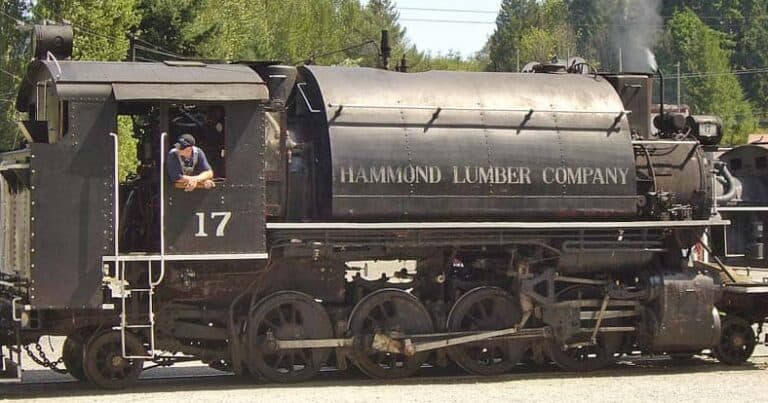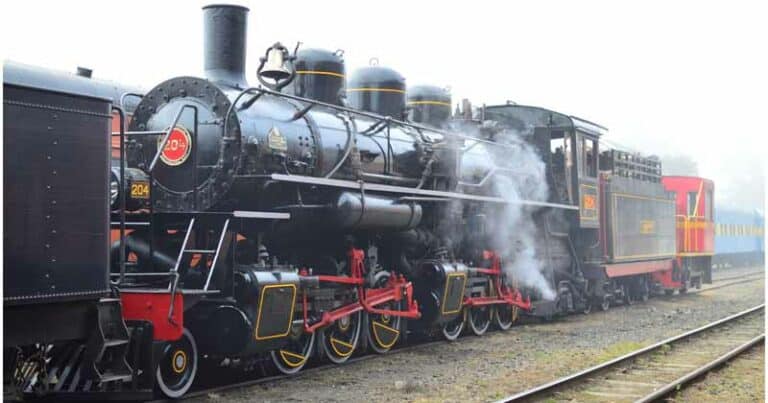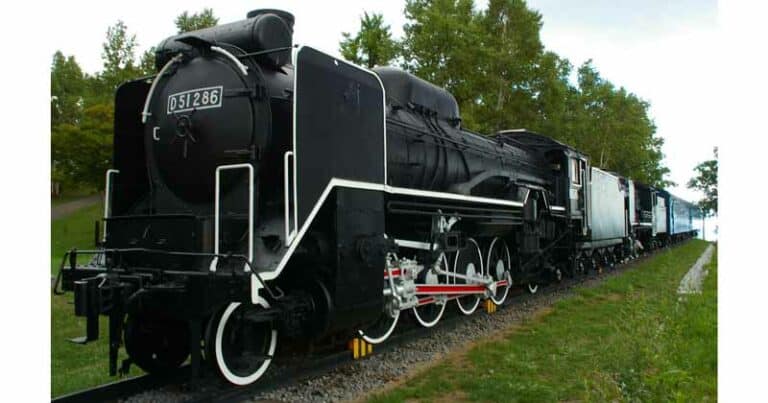What is a Camelback Steam Locomotive?
The term “Camelback” doesn’t seem like something that would go with steam locomotives. But in the early 19th century, many railroads sought better technology and efficiency to help minimize costs, maximize profits, and attain their goals and objectives. The creation of the Camelback was just one product of ingenuity at the time.
Unlike the typical steam locomotives that had cabs for the engineers and the firemen behind the firebox at the rear end of the boiler, the camelback steam locomotive was quite different and unique for that matter. In essence, the camelback steam locomotive was designed in such a way that the cab was placed in the middle of the locomotive.

The firebox of a camelback locomotive was wider than the fireboxes of conventional steam locomotives. And because it was impractical to build the cab behind a very large and wide firebox as it block the engineer’s view, it was designed astride the boiler and before the firebox to give the engineer a better view.
The History of Camelback Steam Locomotive
The early design and use of camelback locomotives can be traced back to the 1840s when the Baltimore & Ohio Railroad began creating steam locomotives that were high-powered. The first ones were built in 1853 by Ross Winans who was a respected locomotive builder at the time. These locomotives were nicknamed the “muddiggers” and had a wheel arrangement of 0-8-0.
The main idea behind these types of locomotives was to design them with large fireboxes that could make the cost-effective as far as fuel-saving costs were concerned. The Muddigers had a similar concept to the camelback design but didn’t become popular until a decade later when John Wootten built what would become known as the Wootten Firebox, which could effectively burn culm and anthracite waste. This type of fuel was plentiful and a lot cheaper than conventional coal. The only issue was that Wootten fireboxes had to be very large and wide to work best, and this presented another headache revolving around the cab and whether it would allow the engineer to have a better view.
It wasn’t until 1877 that the first camelback steam locomotive was built by Pennsylvania and Reading Railroad and had a wheel arrangement of 4-6-0. And because the Wootten fireboxes that were used on the camelback design were larger and taller, most of these locomotives were exclusively used on the East Coast and in the anthracite regions of Pennsylvania.

Safety Concerns and the Demise of Camelback Locomotives
It cannot be denied that the camelback design became widely popular with many railroads, especially in the east where anthracite was in plenty. Some of the railroads that adopted this design for their locomotives included Delaware, Lackawanna & Western, Central Railroad of New Jersey Lehigh & Hudson Railroad, Pennsylvania, Wheeling & Lake Erie Railroad, Union Pacific, Santa Fe, Baltimore & Ohio, Maine Central, and many more.

Unfortunately, having the cab of the locomotive astride the boiler raised many safety concerns for the crew. Issues were raised that the design meant that the engineer and the fireman were separated and their communication was hindered. The engineer was also perched above the side rods of the locomotive and became vulnerable to flying and swinging objects while the fireman was exposed to elements at the back.
For these reasons, the camelback design was banned in 1927 and deemed very dangerous for the railroads. Today, there are few surviving camelbacks including B&O #173, which is on static display at the National Museum of Transportation in St. Louis, Missouri, and Central Railroad of New Jersey #592, which is at the Baltimore & Ohio Railroad Museum in Baltimore, Maryland.
SteamGiants recently answered commonly asked questions that we receive.





